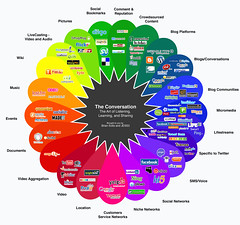 For Prof. Nixon’s PRCA 4330 Public Relations Research Class:
For Prof. Nixon’s PRCA 4330 Public Relations Research Class:
This assignment gives you an opportunity to learn how to monitor blog and other social media content in a way that provides similar insight offered by more traditional environmental scanning methods.
Many people will discuss your client or organization and its products/services on their own Web sites or on social media sites, outside of realm traditional media. Just as it is important for you to know what the media and your community are saying about your organization and its products/services, it is important to know what is being said in social media sites like blogs, social networks, and message boards. For this assignment, you will
- monitor the online conversation that has occurred about an organization or brand of your choosing since November 1, 2009
- create a table for your data
- write an analysis of the conversation with suggestions for action.
You might find bloggers who are blogging about your client organization or brand, people who are creating Web sites about it, message board members who are discussing it in forums, Twitter users who are twittering about it, social networking users who are commenting about it, or online video producers who are posting YouTube videos about it.
Let me know by November 15 how you choose to complete the project (individual or in pairs) and which organization you are choosing using this Google spreadsheet. NOTE: The first person (or pair) to “claim” a Fortune 500 company “gets” the company. No duplicates, please.
For details on the report, see below.
Social Media Monitoring Report
Many thanks to Kelli Burns, from University of South Florida, for allowing me to slightly modify a project posted at her Social Researcher blog.





